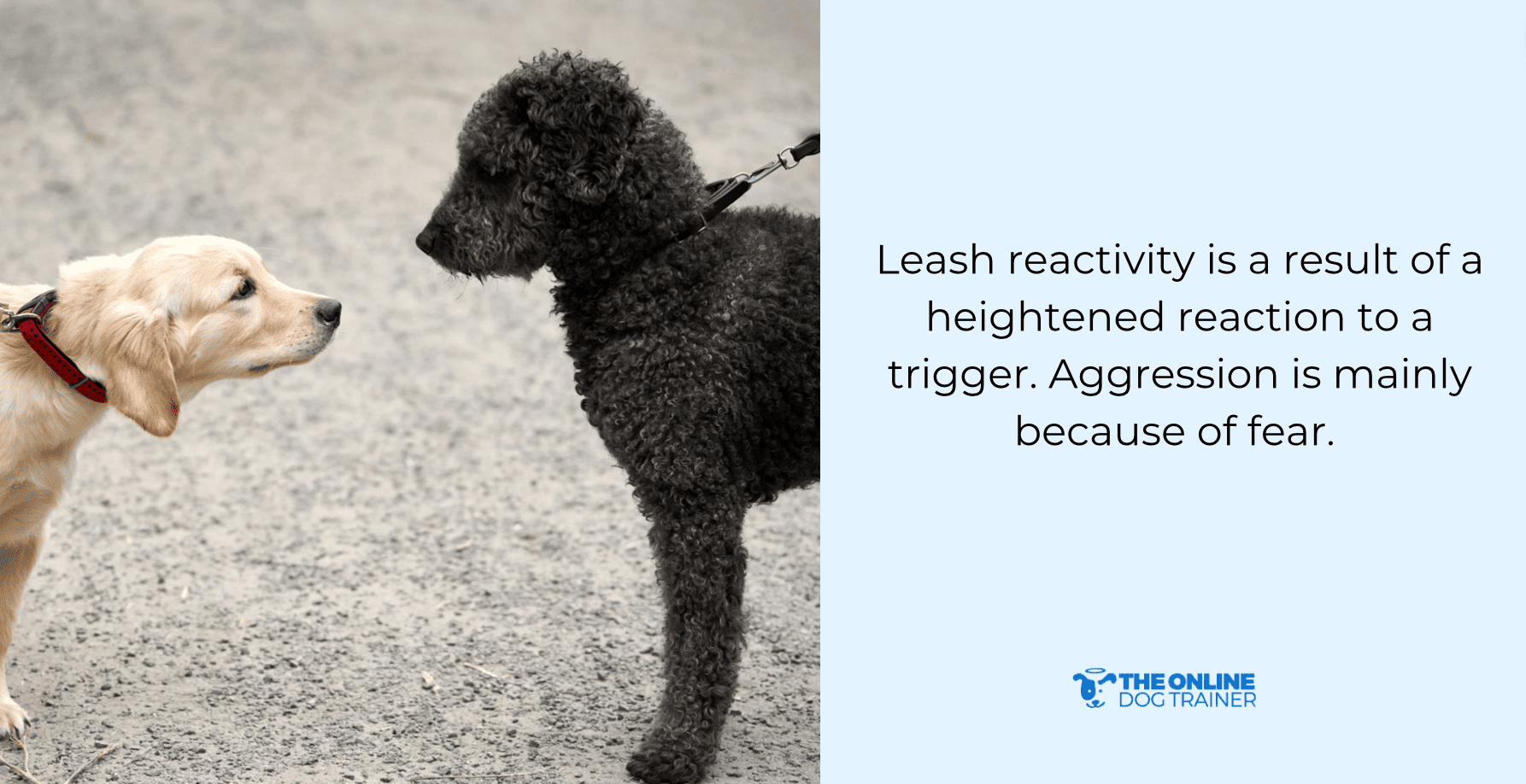Reactive Dogs: Why Is My Dog Reactive to Everything?


Is My Dog Reactive: What Is Dog Reactivity?
When dog owners come to me for dog reactivity issues, most of them come with this question: “Is my dog showing normal behavior, or are they reactive?”
Dog reactivity has one distinctive feature:
- It's over the top.
- It's extreme.
- It is out of the normal reaction to what other dogs naturally ignore.
A dog has reactivity issues when they show an increased reaction involving non-stop barking, hyperactivity, and uncontrollable excitement.
Yes, that is correct. But a dog reactive on leash and an aggressive dog will have a different approach to the object, causing them fear.
To explain the difference, here's a quick analogy.
Let's say you're at a park having a lovely time when suddenly, a cat prances in front of your dog.
To a dog with no reactivity or aggression issues, they'll simply ignore it, or they'll notice it but not react as much.
To a fearful reactive dog with unpleasant experiences with cats, a cat is a big deal. They'll react more intensely, such as jumping restlessly and barking non-stop in the hopes that the trigger will go away.
However, if a reactive dog is turning aggressive, their fear escalates their behavior from only driving the threat away to actually hurting and attacking the trigger.
Bottomline: a reactive dog shows elevated emotions, while an aggressive dog is ready to hurt.
Recent Posts
Dog bite cases surge to 456 in 1 week
Zimbabwe recorded 456 dog bite cases in just one week, according to a Weekly Disease…
Coyote who wanted to play with dogs saved by conspiracy of kindness in Georgia
And it probably saved his life.Credit: HYOSUB SHIN / AJCCredit: HYOSUB SHIN / AJCIt’s hard…
Need a dogsitter who’ll walk your dogs? « Euro Weekly News
When you go away for holiday or work it’s good to know your dog-sitter will…
How to protect your pets from rising temperatures in Indianapolis
INDIANAPOLIS (WISH) — Central Indiana is under a heat advisory until Thursday, mix that with…
The Northern Border is a local dog dock diving site | News, Sports, Jobs
Sprout, a 1-year-old English Pointer, catches and retrieves the bumper during a heat Friday. Sprout…
A month after discovering a severe animal hoarding case in Coffee County, TARPS is still trying to catch the remaining dogs
COFFEE COUNTY, Ala. (WTVY)— A month later, Troy Animal Rescue Project says there are about…